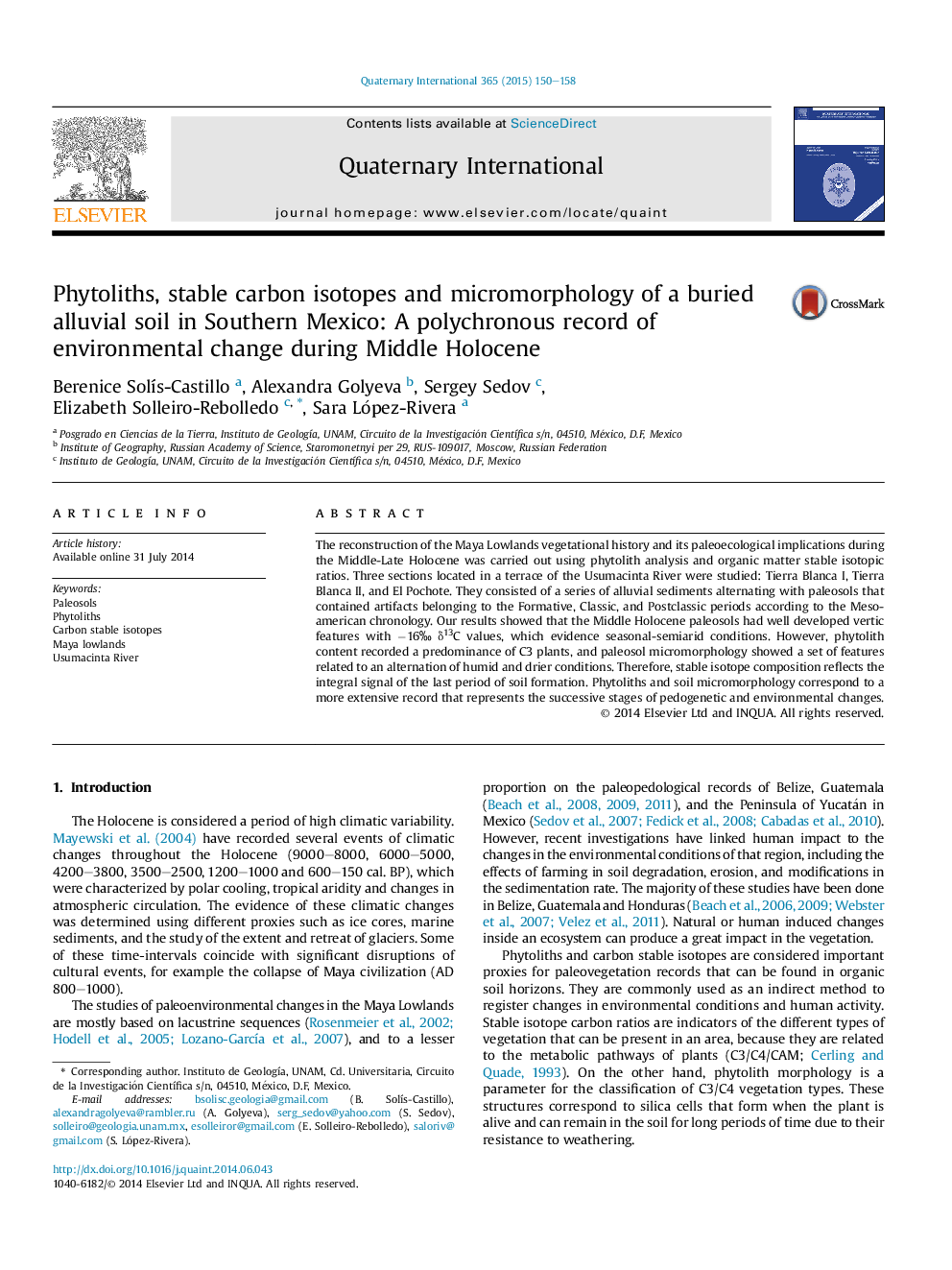| کد مقاله | کد نشریه | سال انتشار | مقاله انگلیسی | نسخه تمام متن |
|---|---|---|---|---|
| 1040909 | 1484132 | 2015 | 9 صفحه PDF | دانلود رایگان |
The reconstruction of the Maya Lowlands vegetational history and its paleoecological implications during the Middle-Late Holocene was carried out using phytolith analysis and organic matter stable isotopic ratios. Three sections located in a terrace of the Usumacinta River were studied: Tierra Blanca I, Tierra Blanca II, and El Pochote. They consisted of a series of alluvial sediments alternating with paleosols that contained artifacts belonging to the Formative, Classic, and Postclassic periods according to the Mesoamerican chronology. Our results showed that the Middle Holocene paleosols had well developed vertic features with −16‰ δ13C values, which evidence seasonal-semiarid conditions. However, phytolith content recorded a predominance of C3 plants, and paleosol micromorphology showed a set of features related to an alternation of humid and drier conditions. Therefore, stable isotope composition reflects the integral signal of the last period of soil formation. Phytoliths and soil micromorphology correspond to a more extensive record that represents the successive stages of pedogenetic and environmental changes.
Journal: Quaternary International - Volume 365, 16 April 2015, Pages 150–158
